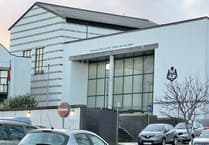The debate has been rekindled recently over whether non-indigenous species, such as the red squirrel, should be introduced into the Isle of Man.
Red squirrels are clearly not native to the island, but at what point does an animal become classed as indigenous?
After 50 years, 100, 500? Maybe never.
The common pheasant (phasianus colchicus) divides opinion - some people view the bird as a spectacularly beautiful and intrinsic feature of our countryside; but others see it as nothing more than a glorified free-range chicken, introduced to Britain to serve the needs of man.
The latter view is held by many ornithologists, whose indifference towards the pheasant is due to it being viewed as a non-native bird.
It has, therefore, a ’compromised status’, and it is frequently omitted from lists of bird species in the UK.
The prevailing sense that the pheasant is only a semi-wild bird is due, perhaps, to the fact that so many of them are bred by gamekeepers for shooting.
It is the game bird of choice and is estimated to be worth £1.6 million to the UK economy, with 20 million birds bred and released every year.
Suffice to say, the ManxSPCA does not support the killing of animals or birds for sport, and believes that ecological and land-management objectives can be achieved without the need for such ’recreational activities’.
Indeed, the poor pheasant has the dubious title of being the most hunted bird in the world, and some detractors would go as far as to say that it’s the most overweight and stupid of birds, which is why so many are hit by cars on our roads.
But it’s the pheasant’s abundance that results in so many road fatalities, along with the fact that it is a poor flyer - it actually prefers to walk or run rather than fly, which could be a sign of the bird’s intelligence because it’s safer on the ground where it’s harder to shoot.
Nor does it need to fly to eat, because its food (grasses, seeds and insects) is all on the ground.
If the pheasant was a rare, or even just a less commonplace, species perhaps we would be in awe whenever we spotted one.
We would marvel at the male bird’s spectacular tail plumage and its shimmery bronze body, and regard it as spectacularly beautiful.
But commonality has drained it of its significance.
Going back to the ’what is an indigenous species’ debate, the pheasant was introduced to Britain by the Romans, who also brought rabbits along with them.
Its origins are in central Asia where it began as a wild jungle fowl, but surely it’s been with us long enough to earn its right to be considered a native, wild bird?
The peacock is not as ubiquitous as the pheasant, but it is becoming more and more commonplace in our countryside.
Although originally a native of India, it has adapted well to our climate and birds that escape (or are released) from private collections are able to breed and thrive in the wild.
We receive several calls a week from members of the public who think the peacock grazing in their back garden, or sitting on their car (peacocks like cars!), needs to be reunited with its owner.
But the reality is that these birds have now ’gone native’ whether we think of them as native or not.
So, the debate over what constitutes an indigenous species, and whether we should introduce new species or not (or indeed cull them, as some people believe should be the case with our Manx wallabies), seems set to continue for many years to come.




